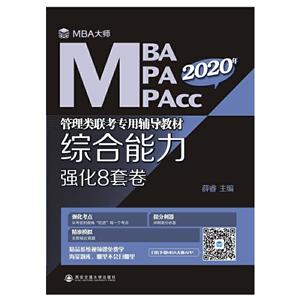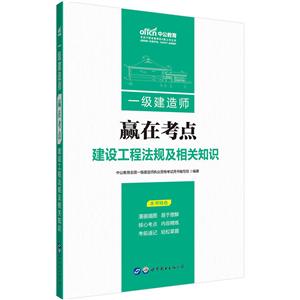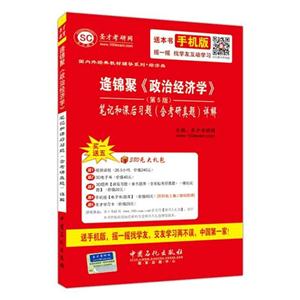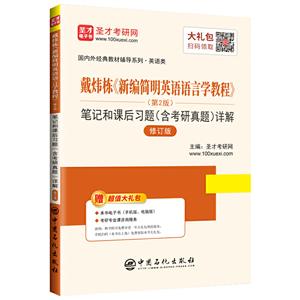无线移动通信系统-(第四版)-英文版

|
无线移动通信系统-(第四版)-英文版作者:阿格拉沃尔 开 本:16开 书号ISBN:9787121285134 定价: 出版时间:2016-04-01 出版社:电子工业出版社 |
无线移动通信系统-(第四版)-英文版 本书特色
本书系统、全面地介绍了无线移动通信的基本理论,分析了无线移动通信所涉及的各个主题,包括无线移动信号的传输、蜂窝的基本概念、多路无线接入、多址技术、调制技术、信道分配技术、通信系统的设计、网络协议、现有的蜂窝系统、ieee 802系列技术、ad hoc网络与传感器网络、无线网络的安全性与隐私问题、卫星通信系统等。为了加强对书中概念的理解,各章还给出了开拓思维的实验。
无线移动通信系统-(第四版)-英文版 内容简介
本书覆盖了无线移动通信所涉及的各个主题,还提供了开拓思维的实验项目,是无线移动通信本科课程的理想双语教材。
无线移动通信系统-(第四版)-英文版 目录
目 录chapter 1 introduction 11.1 history of cellular systems 11.2 characteristics of cellular systems 121.3 fundamentals of cellular systems 151.4 cellular system infrastructure 211.5 network protocols 241.6 ieee 802.11 technologies 241.7 ad hoc networks 251.8 sensor networks 261.9 wireless mans, lans, bans, and pans 271.10 security and privacy in wireless networks 281.11 satellite systems 281.12 recent advances 291.13 outline of the book 291.14 references 301.15 problems 31chapter 2 mobile radio propagation 332.1 introduction 332.2 types of radio waves 332.3 propagation mechanisms 342.4 free space propagation 352.5 land propagation 372.6 path loss 392.7 slow fading 412.8 fast fading 432.8.1 statistical characteristics of the envelope 432.8.2 characteristics of instantaneous amplitude 462.9 doppler effect 482.10 delay spread 502.11 intersymbol interference 512.12 coherence bandwidth 522.13 cochannel interference 522.14 summary 532.15 references 532.16 experiments 542.17 open-ended projects 552.18 problems 55chapter 3 cellular concept 583.1 introduction 583.2 cell area 583.3 signal strength and cell parameters 603.4 capacity of a cell 643.5 frequency reuse 663.6 how to form a cluster 673.7 cochannel interference 703.8 cell splitting 723.9 cell sectoring 723.10 summary 753.11 references 753.12 experiments 753.13 open-ended projects 773.14 problems 77chapter 4 multiple radio access 814.1 introduction 814.2 multiple radio access protocols 824.3 contention-based protocols 834.3.1 pure aloha 844.3.2 slotted aloha 854.3.3 csma 864.3.4 csma/cd 904.3.5 csma/ca 914.4 comparison of csma/cd and csma/ca 954.5 summary 954.6 references 954.7 experiments 974.8 open-ended projects 984.9 problems 98chapter 5 multiple division techniques 1005.1 introduction 1005.2 concepts and models for multiple divisions 1005.2.1 fdma 1015.2.2 tdma 1035.2.3 cdma 1055.2.4 ofdm 1105.2.5 sdma 1125.2.6 comparison of multiple division techniques 1135.3 modulation techniques 1145.3.1 amplitude modulation (am) 1145.3.2 frequency modulation (fm) 1145.3.3 fsk 1165.3.4 phase shift keying (psk) 1165.3.5 quadrature phase shift keying (qpsk) 1175.3.6 π/4qpsk 1175.3.7 quadrature amplitude modulation (qam) 1195.3.8 16qam 1195.4 summary 1205.5 references 1215.6 experiments 1215.7 open-ended projects 1225.8 problems 122chapter 6 channel allocation 1256.1 introduction 1256.2 static allocation versus dynamic allocation 1266.3 fixed channel allocation (fca) 1266.3.1 simple borrowing schemes 1276.3.2 complex borrowing schemes 1276.4 dynamic channel allocation (dca) 1306.4.1 centralized dynamic channel allocation schemes 1306.4.2 distributed dynamic channel allocation schemes 1316.5 hybrid channel allocation (hca) 1326.5.1 hybrid channel allocation (hca) schemes 1326.5.2 flexible channel allocation schemes 1336.6 allocation in specialized system structure 1336.6.1 channel allocation in one-dimensional systems 1336.6.2 reuse partitioning-based channel allocation 1346.6.3 overlapped cells–based channel allocation 1356.7 system modeling 1376.7.1 basic modeling 1376.7.2 modeling for channel reservation 1396.8 summary 1406.9 references 1416.10 experiments 1416.11 open-ended projects 1436.12 problems 143chapter 7 mobile communication systems 1477.1 introduction 1477.2 cellular system infrastructure 1477.3 registration 1517.4 handoff parameters and underlying support 1537.4.1 parameters influencing handoff 1537.4.2 handoff underlying support 1547.5 roaming support 1567.5.1 home agents, foreign agents, and mobile ip 1577.5.2 rerouting in backbone routers 1597.6 multicasting 1617.7 ultra-wideband technology 1647.7.1 uwb system characteristics 1647.7.2 uwb signal propagation 1657.7.3 current status and applications of uwb technology 1657.7.4 difference between uwb and spread spectrum techniques 1667.7.5 uwb technology advantages 1667.7.6 uwb technology drawbacks 1677.7.7 challenges for uwb technology 1677.7.8 future directions 1687.8 femto cell network 1
教材 研究生/本科/专科教材 工学
在线阅读
- 最新内容
- 相关内容
- 网友推荐
- 图文推荐
上一篇:数字通信原理-(第2版)
下一篇:薪酬宏观.微观与趋势-(第2版)
零零教育社区:论坛热帖子
| [高考] 2022 西安电子科技大学《软件工程》大作业答案 (2022-04-25) |
| [家长教育] 孩子为什么会和父母感情疏离? (2019-07-14) |
| [教师分享] 给远方姐姐的一封信 (2018-11-07) |
| [教师分享] 伸缩门 (2018-11-07) |
| [教师分享] 回家乡 (2018-11-07) |
| [教师分享] 是风味也是人间 (2018-11-07) |
| [教师分享] 一句格言的启示 (2018-11-07) |
| [教师分享] 无规矩不成方圆 (2018-11-07) |
| [教师分享] 第十届全国教育名家论坛有感(二) (2018-11-07) |
| [教师分享] 贪玩的小狗 (2018-11-07) |






